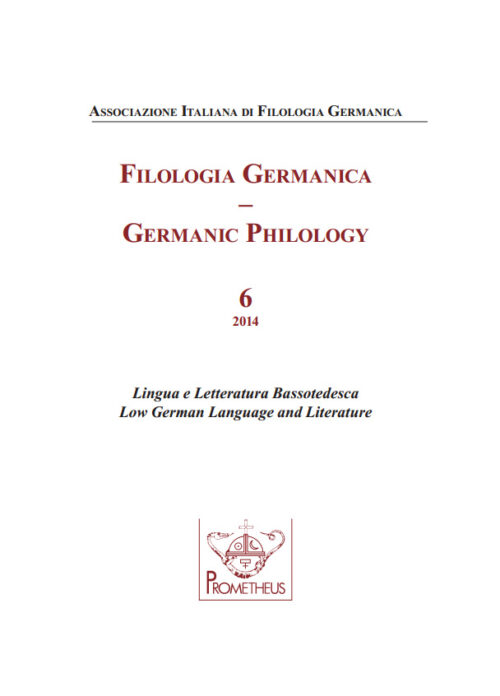La ricezione della Capsula Eburnea in bassotedesco medio
Abstract
The so-called Capsula eburnea, a pseudo-Hippocratic medical prognostic text that was probably first written in Greek in Alexandria in the 5th century AD, was brought to Western Europe through a direct Latin translation made in Montecassino in the 8th century, and a later Latin translation from Arabic, prepared in the second half of the 12th century by Gerard of Cremona, the most significant representative of the Toledo translation school. The older and, in particular, the later Latin version enjoyed considerable circulation in the Germanic culture and were repeatedly translated into Germanic vernaculars. The Middle Low German reception of the Capsula eburnea appears within more general medical books or compendia, such as the Arzneibuch by Albrecht van Borgunnien (composed c. 1350), the so-called Düdesche Arstedie (c. 1400) and the so-called Abdinghofer Arzneibuch (second half of the 15th century). These three texts are examined here in their internal peculiarities and through a comparison with other versions. A closer look at the common core shared by the Greek original, the Latin and Arabic translations and the High and Low German versions, will prove that the Capsula eburnea enjoyed wide circulation as ‘text frame’ to which other, even heterogeneous elements could be added. In particular, Albrecht and the Düdesche Arstedie share a common core and a number of signa going back to the Arabic and later Latin version and to Ortolf von Baierlant’s shortened version, while the Abdinghofer Arzneibuch text only shows a frame pattern where prognostics are made and the names of Hippocrates and other Greek authorities are cited in order to reinforce the reliability of the remedies listed.
Published
Issue
Section
License

This work is licensed under a Creative Commons Attribution-ShareAlike 4.0 International License.
CC-BY-SA



